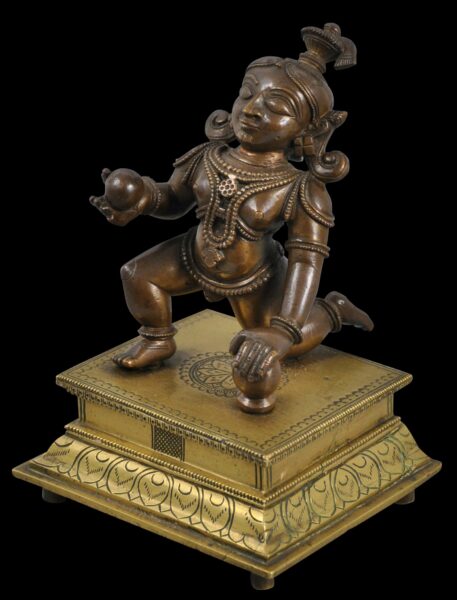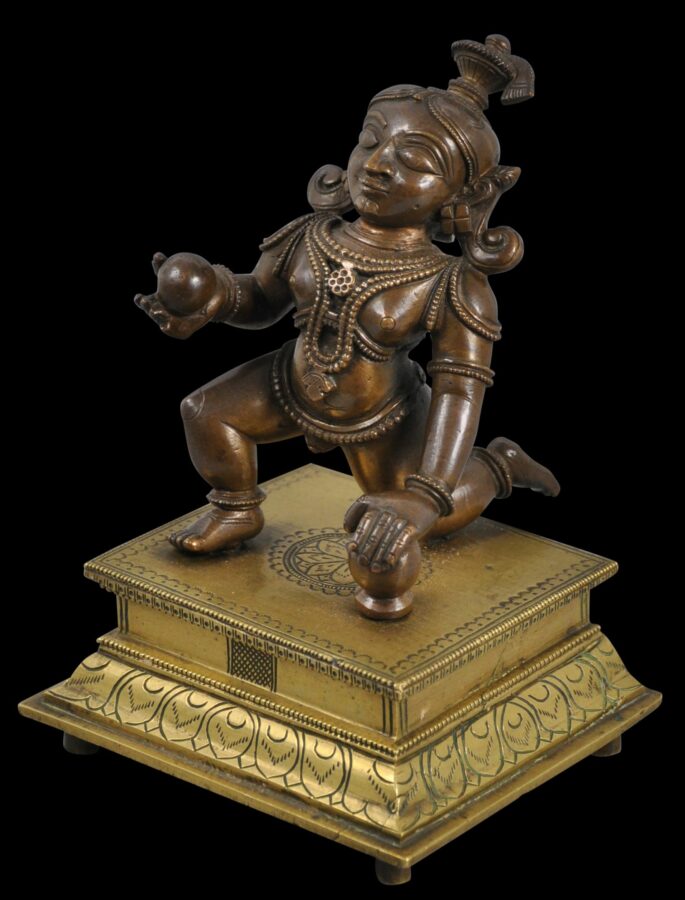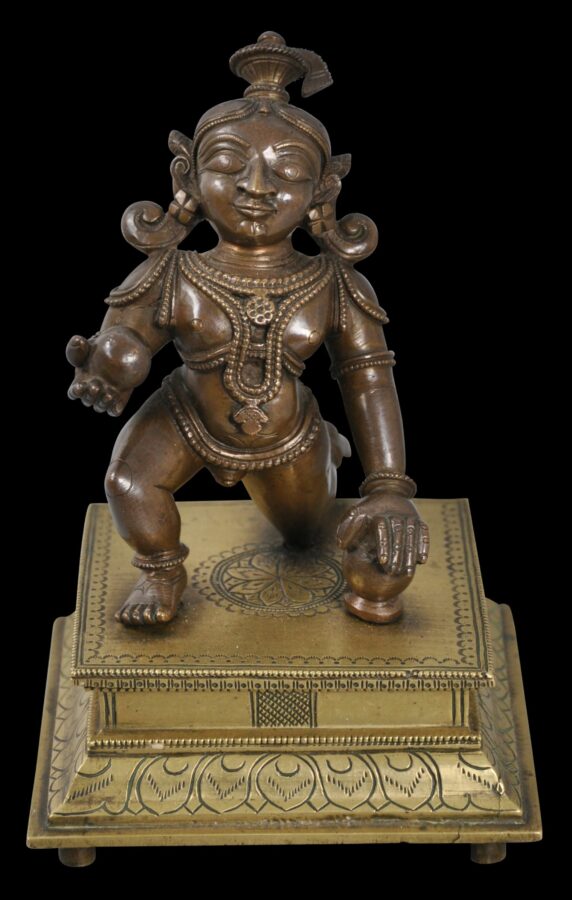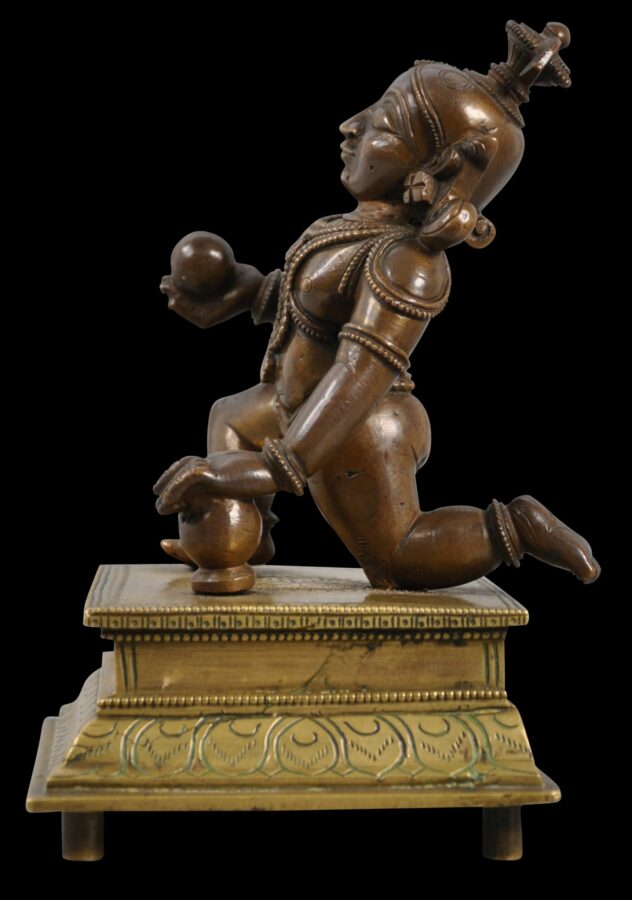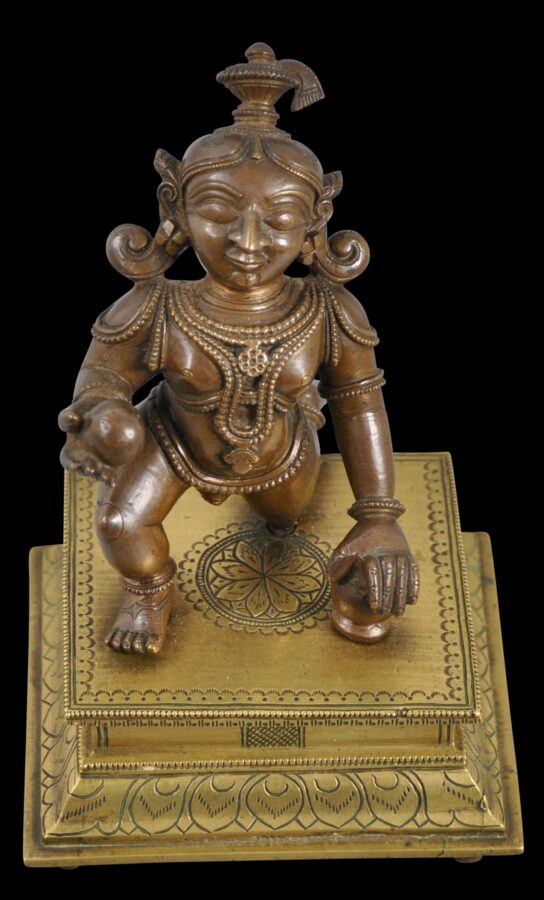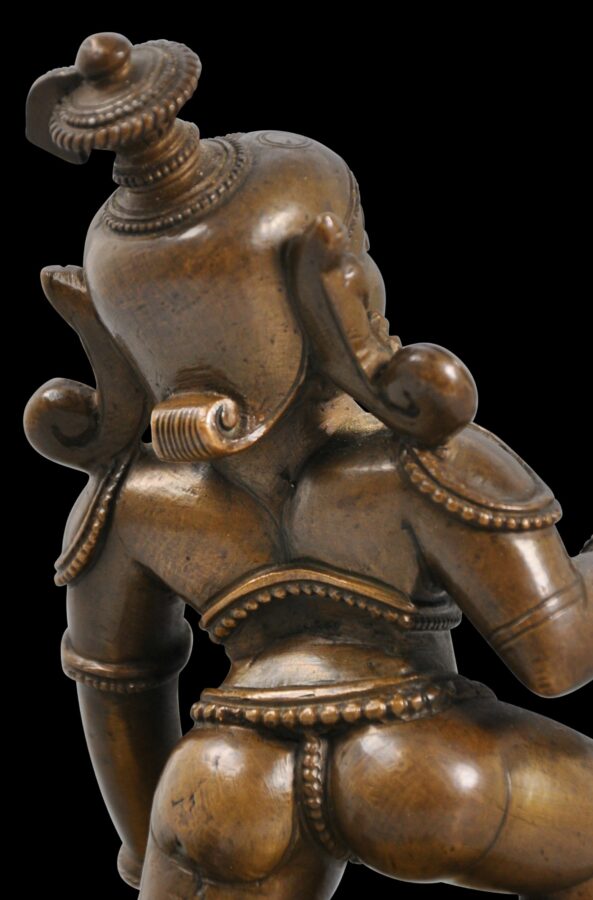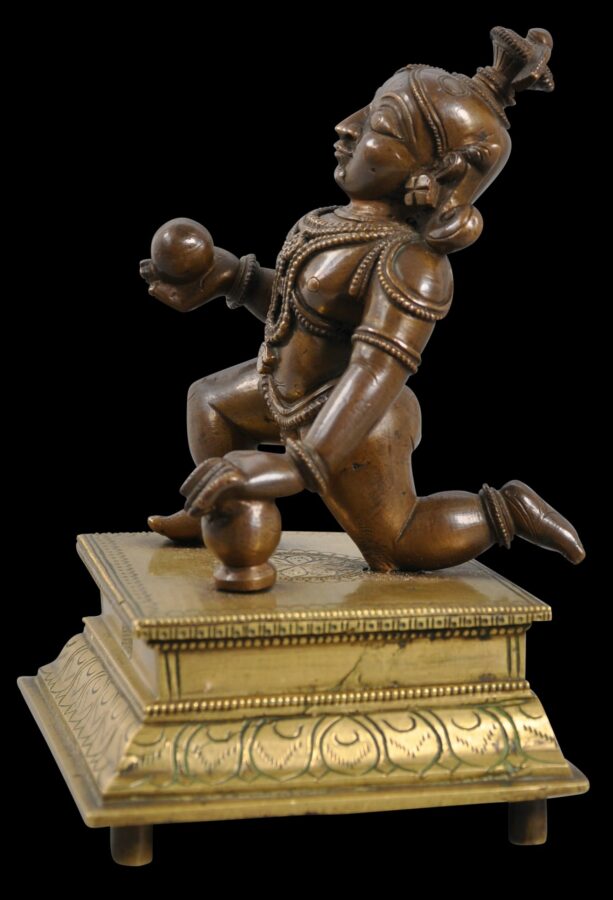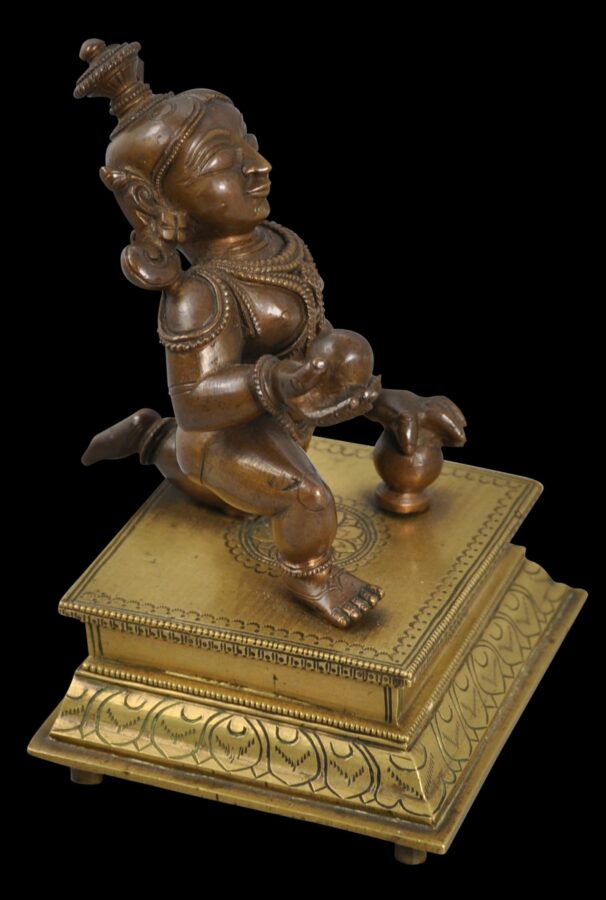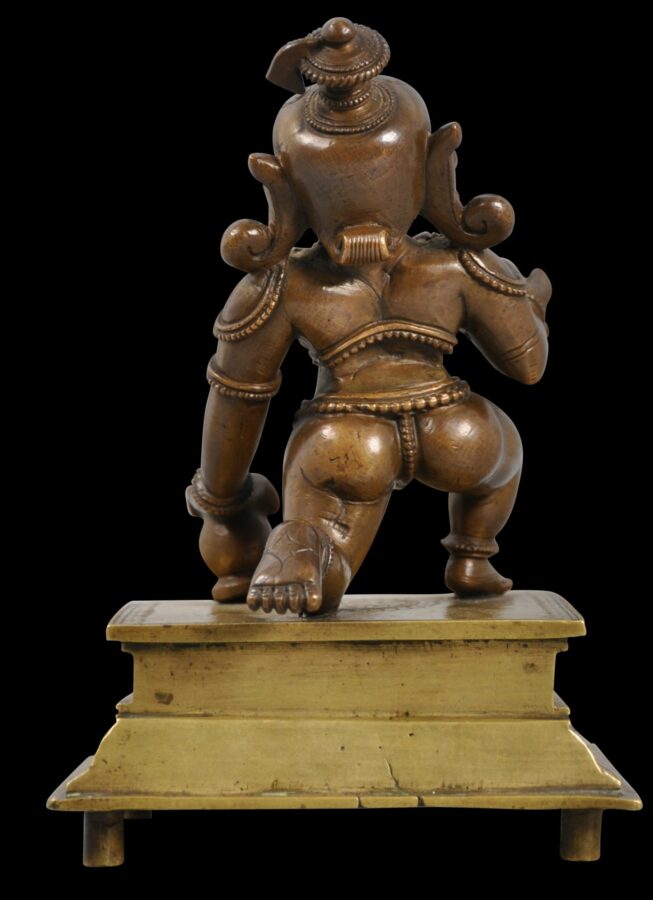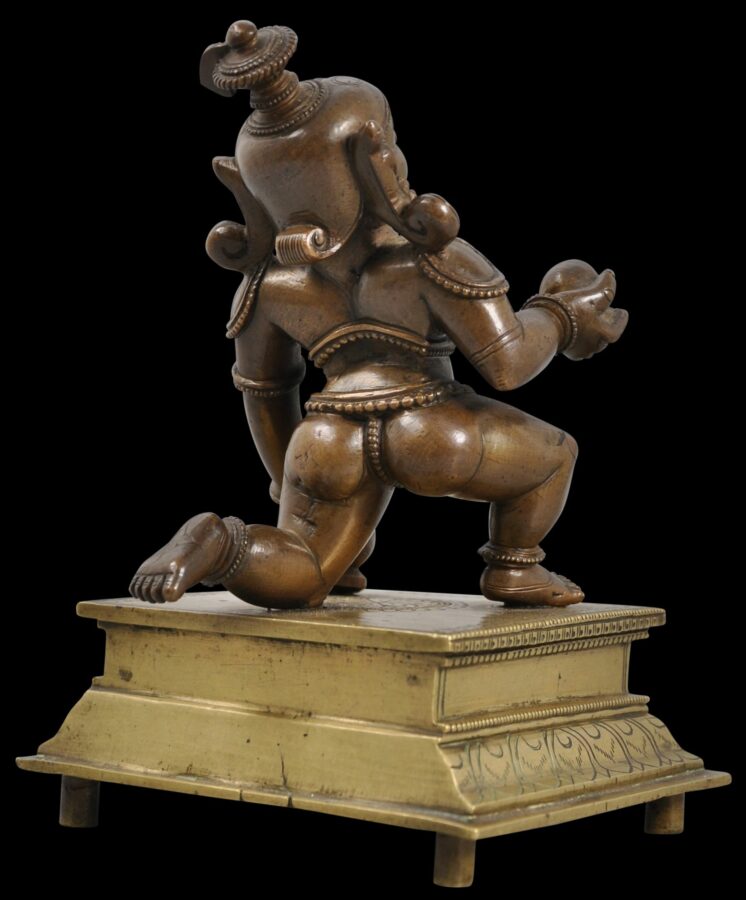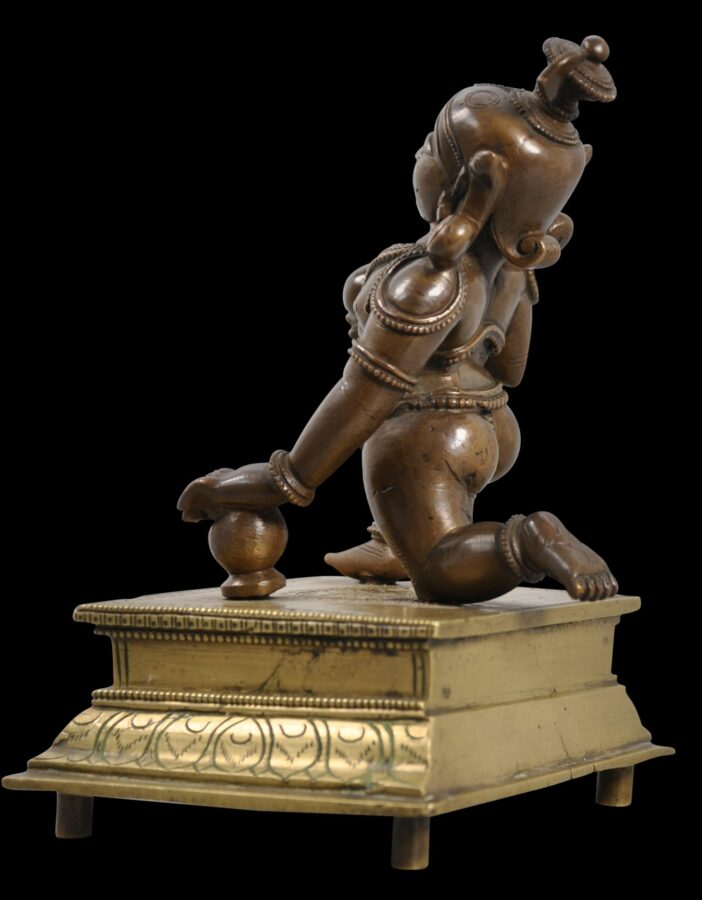This very well cast and relatively large image of Krishna shows the deity as a crawling infant – a form known as Balakrishna. He holds a butter ball in his right hand. He is naked other than for a chest band, a waist band, and jewellery. His left hand rests on what appears to be another butterball.
He wears multiple necklaces, bracelets, upper arm bands, anklets, and hair decoration as well as a tall, jewelled hair decoration. All the while, Krishna maintains a serene, knowing, slightly smiling expression.
One particularly beautiful aspect of the bronze is a hair curl, modelled like a butter curl, that protrudes from the back of Krishna’s head.
He crawls atop a tiered, rectangular plinth, the sides of which are decorated with lotus petals and sections of cross-hatching. The top of the plinth, beneath Krishna, is similarly decorated. It stands on four small cylindrical feet. The image of Krishna and the plinth are attached permanently by means of bronze rivets. The dynamism of the scene is emphasised by Krishna’s left foot and leg protruding away from the back of the plinth.
The imagery of the butterballs relates to another incident in his early life when he stole a butterball from his mother’s larder.
The image of Krishna has been cast in bronze but the platform upon which he crawls has been cast in brass, providing a pleasing contrast between the two metals. The combination of brass and bronze in religious items is referred to as ganga-jumna. ‘Ganga’ refers to the River Ganges and ‘Jumna’ to the River Jumna (also called Yamuna). The Jumna is the longest tributary river of the Ganges in northern India. It travels a length of 1,376 kilometres (855 miles) before merging with the Ganges at Triveni Sangam, Allahabad, the site for the massive Kumbha Mela festival every twelve years. It is the longest river in India that does not directly flow into the sea. The water of one has a slight yellow hue on account of the alluvial mud suspended in its waters, whilst that of the other has a reddish hue, and so in this vessel, the two rivers are represented by yellowish brass and reddish copper, with the combination in the one item being symbolic of the merging and mixing of these two holy rivers at Triveni Sangam.
This is a fine miniature bronze. The condition, patina and casting are all excellent.
References
Mitchell, A.G., Hindu Gods and Goddesses, UBSPD, 1982.


